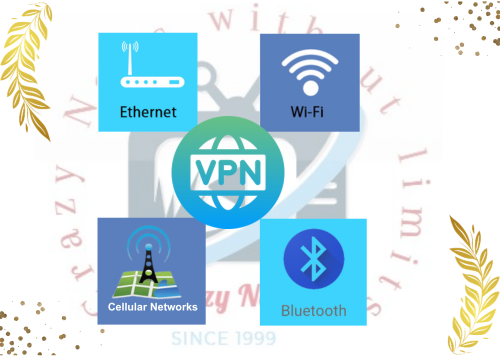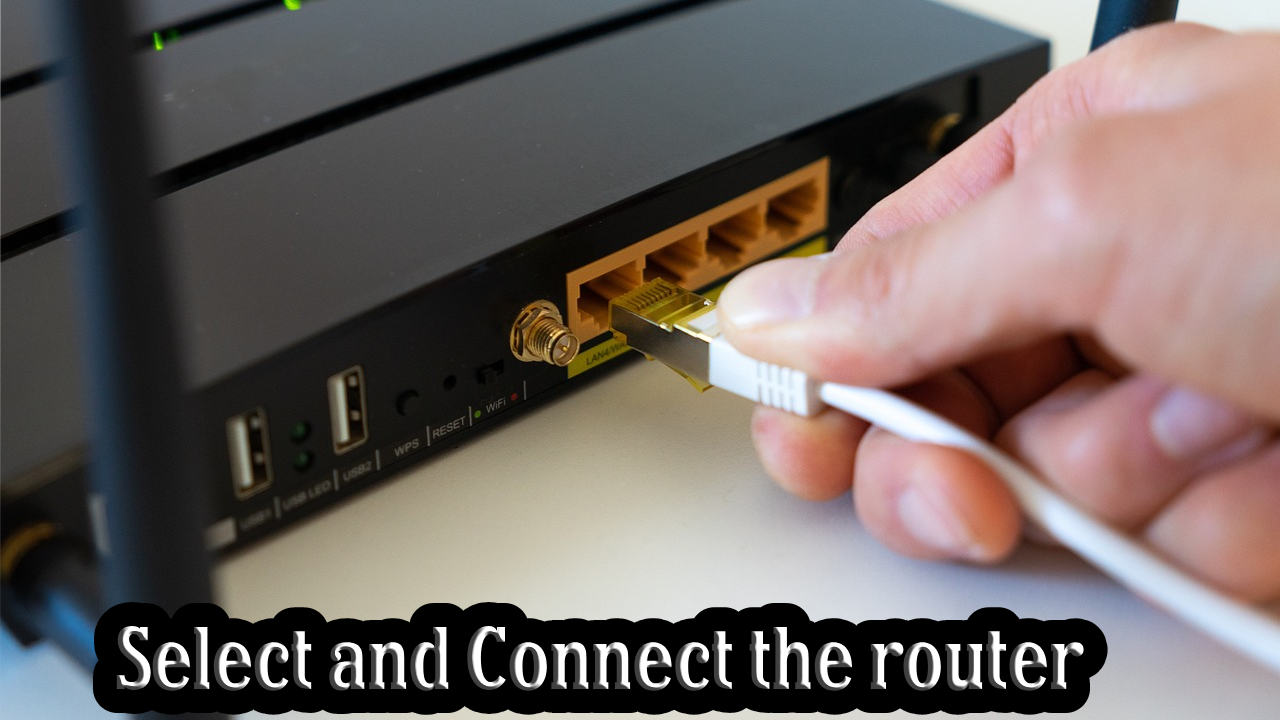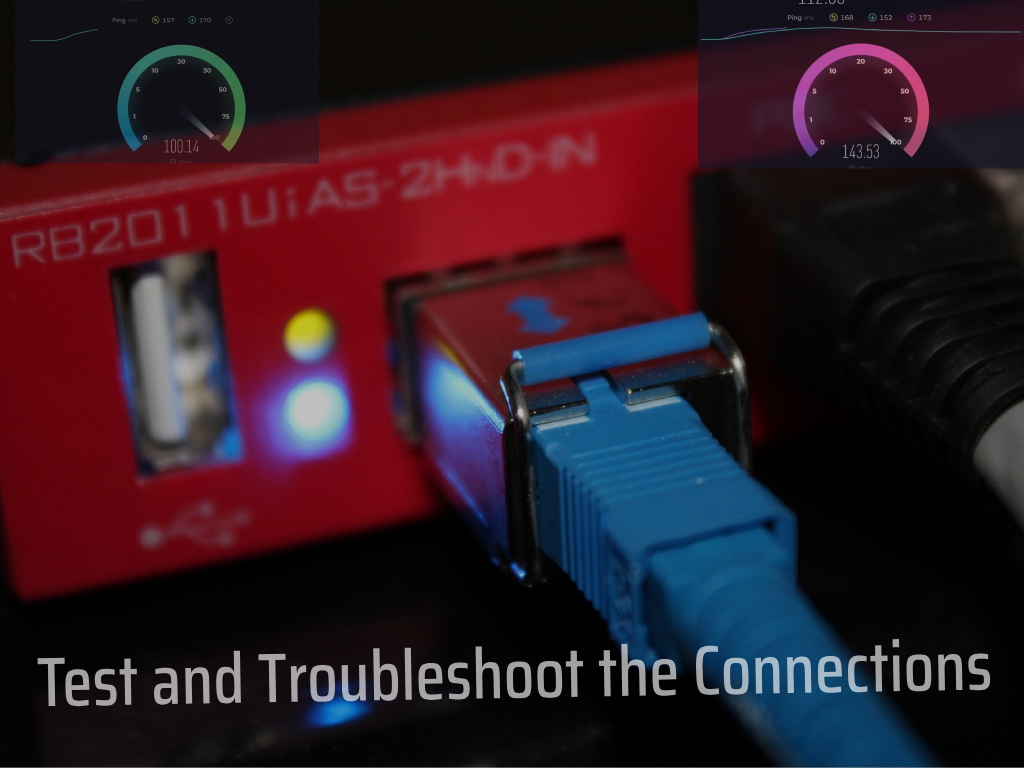The Digital Constantine landscape is evolving, and for beginners it can be overwhelming. Networking technology, in particular, is a vital foundation of our daily lives, and understanding it can help you stay connected and productive. In today’s digital age, networking technology has become a necessity for personal and professional friendships.
Whether you’re looking to improve your online presence or simply stay connected with friends and family, understanding networking techniques is essential. In this beginners guide, we’ll explore the basics of networking technology around the world, including the different types of networks, network components, and best practices for staying safe online. By the end of this guide, you’ll have a basic understanding of networking technology and be able to navigate the digital landscape with confidence.
Introduction to the digital landscape in the Worldwide
The digital landscape in the Worldwide has evolved at an astonishing pace over the past few decades, transforming the way we connect, communicate, and conduct business. With advancements in networking technology, the country has witnessed a revolution that has brought about unprecedented opportunities and challenges.
In this beginner’s guide, we will delve into the various aspects of the digital landscape in the Worldwide, providing valuable insights and practical tips for navigating this ever-changing terrain. From the infrastructure that powers our digital connectivity to the trends shaping the future of networking technology, we will explore it all.
The Worldwide boasts a robust and extensive telecommunications infrastructure, with a vast network of fiber optic cables, data centers, and wireless connectivity spanning the entire nation. This infrastructure serves as the backbone for the digital ecosystem, facilitating seamless internet access, cloud computing services, and data transmission.
Moreover, the Worldwide is home to some of the most influential tech companies, innovative startups, and research institutions driving technological advancements. From Silicon Valley in California to the thriving tech hubs in cities like Seattle, Austin, and Boston, the country offers a fertile ground for networking technology development and innovation.
However, navigating this vast digital landscape can be overwhelming, especially for beginners. With rapidly evolving technologies such as 5G, IoT, and artificial intelligence, it is essential to stay informed and adapt to the changing landscape.
Throughout this guide, we will demystify complex concepts, introduce key terminologies, and provide practical guidance on how to leverage networking technology effectively. Whether you are an entrepreneur looking to establish a digital presence, a student exploring career opportunities in the tech industry, or simply a curious individual interested in understanding the digital landscape, this guide is designed to empower you.
So, fasten your seatbelts and get ready for an exciting journey through the digital landscape in the Worldwide. Together, we will uncover the intricacies, opportunities, and challenges that lie ahead, equipping you with the knowledge and tools to thrive in this dynamic and interconnected world of networking technology.
Understanding the basics of networking technology
In today’s increasingly connected world, understanding the basics of networking technology is essential for anyone looking to navigate the digital landscape. Whether you’re a business owner, an aspiring IT professional, or simply a curious individual, having a grasp of networking technology can open up a world of opportunities and possibilities.
At its core, networking technology refers to the communication and exchange of information between devices and systems. It involves the interconnectedness of computers, servers, routers, switches, and other hardware components, as well as the software and protocols that enable them to communicate with each other.
To get started, it’s important to familiarize yourself with the fundamental building blocks of networking. One key concept is the IP address, which serves as the unique identifier for devices connected to a network. Understanding how IP addresses work, including the difference between IPv4 and IPv6, is crucial for effective communication and device management.
Another fundamental aspect is network topologies, which define the physical or logical arrangement of devices within a network. Common topologies include star, bus, ring, and mesh, each with its own advantages and limitations. Understanding these topologies can help you design and troubleshoot networks effectively.
Moreover, protocols play a vital role in networking technology. They are a set of rules and guidelines that govern the transmission and reception of data packets between devices. Important protocols include TCP/IP (Transmission Control Protocol/Internet Protocol), which is the foundation of the internet, and Ethernet, which is widely used for local area networks (LANs).
As you delve deeper into networking technology, you’ll also come across concepts such as network security, wireless networking, cloud computing, and virtual private networks (VPNs). These are all areas that continue to evolve and shape the digital landscape, and having a solid understanding of them can help you make informed decisions and adapt to the changing technological landscape.
By grasping the basics of networking technology, you’ll be better equipped to set up and manage networks, troubleshoot connectivity issues, and explore advanced topics within the field. Whether you’re looking to advance your career or simply expand your knowledge, networking technology is an exciting and essential area to explore in today’s digital age.
The importance of networking technology in today’s world
In today’s world, networking technology has become integral to our daily lives and is essential for businesses and individuals alike. From connecting devices and systems to facilitating communication and data transfer, networking technology plays a vital role in shaping the way we interact and conduct business.
One of the key reasons why networking technology is of utmost importance is its ability to connect people and devices across vast distances. Whether it’s a small business with multiple branches or individuals communicating with loved ones in different parts of the world, networking technology enables seamless connectivity and communication, breaking down barriers of time and space.
Furthermore, networking technology allows for efficient sharing and transfer of information. With the increasing reliance on digital platforms, data has become a valuable asset for businesses. Networking technology ensures that data can be securely stored, accessed, and shared across various devices and platforms, enabling collaboration and productivity.
In addition to connectivity and data transfer, networking technology also plays a significant role in enhancing efficiency and automation. From smart homes and offices to industrial automation systems, networking technology enables the integration and control of various devices and systems, resulting in streamlined processes, energy savings, and improved productivity.
Moreover, networking technology serves as the backbone of the internet and the digital ecosystem. It enables access to online services, e-commerce platforms, cloud computing, and various digital applications that have become an integral part of our personal and professional lives. Without networking technology, the digital landscape as we know it would not exist.
As technology continues to advance at a rapid pace, the importance of networking technology will only grow. It will continue to shape our world, enabling innovation, connectivity, and limitless possibilities. Whether it’s for businesses striving for digital transformation or individuals seeking to stay connected in a digital age, understanding and harnessing the power of networking technology is crucial for navigating the complexities of today’s digital landscape.
Types of Networking Technologies commonly used in the Worldwide

When it comes to networking technologies in the Worldwide, there are several types that are commonly used across different industries. These technologies play a crucial role in connecting devices, systems, and people, enabling seamless communication and collaboration. Here are a few of the most prevalent networking technologies you should be familiar with:
Ethernet:
Ethernet is a widely adopted technology that allows devices to connect to a local area network (LAN) using wired connections. It provides high-speed and reliable data transmission, making it ideal for office environments. Ethernet is commonly used for connecting computers, servers, printers, and other devices within a local network.
Wi-Fi:
Wi-Fi, or Wireless Fidelity, is a wireless networking technology that allows devices to connect to a network without the need for physical cables. Wi-Fi is extensively used for internet access in various settings, such as homes, offices, cafes, and public spaces. It provides flexibility and convenience, enabling users to access the network and the internet from anywhere within the coverage area.
[ad_3]
Cellular Networks:
Cellular networks, such as 3G, 4G, and now 5G, enable mobile communication and data transfer. These networks rely on cellular towers and wireless signals to connect devices to the internet. Cellular networks are commonly used for mobile devices like smartphones, tablets, and IoT devices, providing users with internet access on the go.
VPN (Virtual Private Network):
VPN is a technology that allows secure and private communication over public networks. It creates a virtual encrypted tunnel between the user’s device and the network, ensuring that data remains confidential and protected from unauthorized access. VPNs are commonly used by businesses to enable remote access to company networks and ensure secure communication when accessing sensitive information.
Bluetooth:
Bluetooth is a short-range wireless technology that enables the connection of devices over short distances. It is commonly used for connecting peripherals like keyboards, mice, headphones, and speakers to computers and mobile devices. Bluetooth also plays a role in IoT devices, allowing them to communicate with each other and with other devices.
Understanding these networking technologies will provide you with a solid foundation as you navigate the digital landscape in the Worldwide. Whether you are setting up a home network, working in an office environment, or exploring the possibilities of IoT, being aware of these common networking technologies will help you make informed decisions and effectively utilize the available resources.
Choosing the right networking technology for your needs
When it comes to choosing the right networking technology for your needs, it’s essential to consider various factors to ensure optimal performance and efficiency. The digital landscape in the Worldwide offers a multitude of options, each with its own strengths and weaknesses.
First and foremost, assess your specific requirements. Are you a small business looking for a reliable and cost-effective solution, or a large enterprise that demands high-speed and secure connectivity? Understanding your needs will help determine the type of networking technology that suits you best.
One option is Ethernet, a widely-used technology that provides fast and stable connections. It is ideal for businesses that require high bandwidth and low latency, such as those involved in data-intensive activities like video conferencing, cloud computing, or large file transfers. Ethernet offers scalability, allowing you to expand your network as your business grows.
If wireless connectivity is more suitable for your needs, Wi-Fi technology is a popular choice. It enables devices to connect to the internet without the need for physical cables, providing flexibility and convenience. Wi-Fi is commonly used in office environments, public spaces, and homes, allowing users to connect multiple devices simultaneously.
For larger scale networks or organizations with multiple locations, Virtual Private Networks (VPNs) offer secure and private connections over a public network. VPNs encrypt data, ensuring confidentiality and protecting sensitive information from unauthorized access. This technology is beneficial for remote workers, connecting branch offices, or accessing company resources securely from different locations.
Lastly, consider future growth and technological advancements. As the digital landscape continuously evolves, it’s important to choose a networking technology that can adapt and accommodate future requirements. Research and stay informed about emerging technologies such as 5G, Internet of Things (IoT), or Software-Defined Networking (SDN), which could potentially enhance your network capabilities.
Ultimately, selecting the right networking technology involves understanding your specific needs, weighing the pros and cons of available options, and considering future scalability. By making an informed decision, you can navigate the digital landscape with confidence and ensure that your networking infrastructure supports your business goals.
Setting up a Home network: step-by-step guide
Setting up a home network may seem like a daunting task, but with a step-by-step guide, it becomes a manageable and rewarding endeavor. Whether you’re a tech-savvy individual or a beginner in networking technology, this guide will help you navigate through the process smoothly.
Step 1: Determine your network requirements

Before diving into the setup process, it’s crucial to assess your network requirements. Consider the number of devices that will be connected, the desired internet speed, and the range of coverage needed within your home. This will help you choose the appropriate equipment and make informed decisions throughout the setup process.
Step 2: Select a router
A router acts as the central hub for your home network. Research different router models, considering factors such as speed capabilities, range, and security features. Look for routers that offer dual-band functionality, allowing you to connect devices on both the 2.4GHz and 5GHz frequency bands for optimal performance.

Step 3: Connect the router
Locate a suitable spot for your router that is centrally positioned within your home. Connect one end of an Ethernet cable to the modem provided by your internet service provider (ISP) and the other end to the WAN or internet port on the router. Power on the router and wait for it to establish a stable connection.
Step 4: Secure your network

Protecting your network from unauthorized access is essential. Access your router’s settings through a web browser by typing its IP address in the address bar. Set a strong and unique password for your router’s admin interface to prevent unauthorized changes. Enable WPA2 encryption to secure your Wi-Fi network, ensuring that only authorized users can connect.
Step 5: Connect devices
Once your router is set up and secured, it’s time to connect your devices. Access the Wi-Fi settings on each device and select your network name (SSID). Enter the Wi-Fi password you set earlier to establish a secure connection. For devices that support Ethernet connections, connect them to the available LAN ports on the router using Ethernet cables.
Step 6: Test and troubleshoot

After connecting all devices, test your network connectivity to ensure everything is working correctly. Verify that you have internet access on each device and check the signal strength throughout your home. If you encounter any issues, consult your router’s documentation or reach out to customer support for troubleshooting assistance.
By following this step-by-step guide, you can set up a reliable and secure home network that meets your specific needs. With your network up and running, you’ll be able to enjoy seamless connectivity, enhanced productivity, and endless possibilities in the digital landscape.
Exploring networking hardware and equipment
When it comes to networking technology, having the right hardware and equipment is crucial for establishing a reliable and efficient network. Whether you are setting up a small home network or managing a large-scale enterprise network, understanding the different types of networking equipment available is essential.
One of the primary components of any network is the router. A router acts as the central hub, connecting different devices and allowing them to communicate with each other and the internet. It directs network traffic, ensuring that data packets are sent to their intended destinations. There are various types of routers available, ranging from basic home routers to enterprise-grade routers with advanced features and capabilities.
Switches are another essential networking device. They provide additional ports for connecting multiple devices within a network. Switches enable devices to communicate with each other directly, improving network performance and reducing congestion. Like routers, switches come in different sizes and configurations to meet specific networking needs.
For larger networks or those that require extensive wireless coverage, wireless access points (WAPs) are necessary. These devices enable wireless connectivity by transmitting and receiving signals between wireless devices and the network. WAPs are especially useful in environments where wired connections are impractical or when mobility is essential.
Network cables play a vital role in establishing connections between devices. Ethernet cables, specifically Cat5e and Cat6 cables, are commonly used for wired connections. These cables provide fast and reliable data transmission, ensuring smooth communication within the network. It is important to choose the appropriate cable type based on your network requirements and the distance between devices.
Besides the mentioned equipment, other networking devices such as network switches, network firewalls, and network servers may be required depending on the complexity and scale of the network.
Before investing in networking hardware and equipment, it is essential to assess your network requirements, consider future scalability, and consult with professionals to ensure you choose the right devices for your specific needs. With the right networking equipment in place, you can establish a robust and efficient network that enables seamless communication and connectivity within your organization.
Understanding network security and privacy considerations
In today’s digital landscape, network security and privacy considerations are essential for individuals and businesses alike. With the increasing reliance on technology and the interconnectedness of devices, it has become more crucial than ever to understand the potential risks and take proactive measures to protect sensitive information.
First and foremost, it is crucial to implement strong passwords and authentication methods for all network devices and accounts. Weak passwords are often the gateway for hackers to gain unauthorized access to networks and exploit vulnerabilities. Utilizing a combination of alphanumeric characters, symbols, and upper and lower-case letters can significantly enhance the security of your network.
Moreover, implementing encryption protocols, such as Secure Sockets Layer (SSL) or Transport Layer Security (TLS), adds an additional layer of protection when transmitting sensitive data over the network. Encryption ensures that the information being transmitted is only accessible to authorized parties and prevents unauthorized interception and tampering.
Regularly updating software and firmware is another essential aspect of network security. Software updates often include patches that address vulnerabilities and security flaws that cybercriminals may exploit. By keeping your systems up to date, you ensure that you are benefiting from the latest security enhancements and minimizing the risk of potential breaches.
In addition to protecting the network infrastructure, it is crucial to educate users about cybersecurity best practices. This includes training employees on identifying and avoiding phishing attempts, practicing safe browsing habits, and being cautious when sharing sensitive information online. The human element is often the weakest link in network security, and by promoting a culture of awareness and vigilance, you can significantly reduce the risk of successful attacks.
Finally, implementing network monitoring and intrusion detection systems can help identify any suspicious activities or potential threats in real-time. These systems can detect and alert network administrators about any unauthorized access attempts, unusual traffic patterns, or potential breaches, allowing them to take immediate action and mitigate any potential damage.
By understanding and implementing these network security and privacy considerations, you can navigate the digital landscape with confidence, knowing that you have taken the necessary steps to safeguard your network, protect sensitive data, and maintain the privacy and trust of your customers and stakeholders.
Tips for troubleshooting common networking issues
Networking issues can be frustrating, but with a few troubleshooting tips, you can quickly get back on track. Here are some common networking issues you may encounter and how to resolve them:
Slow internet speed:
If you notice that your internet connection is slow than Try these Steps
- Try resetting your router.
- Unplug it from the power source, wait for about 30 seconds, and then plug it back in.
- This can help refresh the connection and improve speed.
- If the issue persists, contact your internet service provider to ensure there are no connectivity problems in your area.
Wi-Fi signal dropouts:
If you experience frequent Wi-Fi signal dropouts,
- Check the placement of your router.
- Ensure it is positioned in a central location in your home or office to maximize coverage.
- You can also avoid placing it near walls or objects that may obstruct the signal.
- If needed, consider investing in Wi-Fi range extenders to boost the signal in areas with weak coverage.
Unable to connect to the network:
If you are unable to connect to your network,
- First ensure that your device’s Wi-Fi is turned on.
- Double-check the network name and password you are entering.
- If you still can’t connect, try restarting your device or forgetting the network and reconnecting.
- In some cases, updating your device’s software or resetting network settings can also resolve connectivity issues.
IP address conflicts issue:
An IP address conflict can cause network connectivity problems. To resolve this,
- Try releasing and renewing your IP address.
- Open the Command Prompt (Windows) or Terminal (Mac), and type “ipconfig /release” followed by “ipconfig /renew” for Windows or “sudo ipconfig set en0 DHCP” for Mac.
- This will release your current IP address and obtain a new one from the network.
Firewall blocking network access:
If you are unable to access certain websites or services, check your firewall settings. Disable your firewall temporarily and see if the issue persists. If disabling the firewall resolves the problem, adjust your firewall settings to allow access to the specific websites or services.
![]() Remember, networking issues can vary depending on your specific setup and devices. If these troubleshooting tips do not resolve your problem, it may be beneficial to consult with a professional network technician or contact your internet service provider for further assistance.
Remember, networking issues can vary depending on your specific setup and devices. If these troubleshooting tips do not resolve your problem, it may be beneficial to consult with a professional network technician or contact your internet service provider for further assistance.
Future trends and advancements in networking technology
As technology continues to advance at a rapid pace, networking technology is no exception. Keeping up with the latest trends and advancements in this field is crucial for businesses and individuals alike. In this section, we will explore some of the future trends and advancements in networking technology that are shaping the digital landscape in the Worldwide.
One of the most exciting developments in networking technology is the emergence of 5G networks. With significantly faster speeds and lower latency compared to its predecessor, 5G has the potential to revolutionize the way we connect and communicate. This technology will enable faster downloads, smoother streaming, and enhance the capabilities of emerging technologies such as augmented reality (AR) and virtual reality (VR).
The rise of the Internet of Things (IoT) is another trend that is transforming networking technology. IoT refers to the network of interconnected devices that can communicate and share data with each other. From smart homes to industrial automation, IoT has the potential to streamline processes, improve efficiency, and enhance our daily lives. As more devices become connected, networking infrastructure will need to adapt to accommodate the increased data traffic and ensure seamless connectivity.
Artificial Intelligence (AI) and Machine Learning (ML) are also playing a significant role in shaping the future of networking technology. These technologies can analyze vast amounts of data, identify patterns, and make intelligent decisions in real-time. AI and ML algorithms can optimize network performance, detect and prevent security threats, and automate network management processes, leading to more efficient and reliable networks.
In addition to these advancements, cybersecurity will continue to be a top priority in networking technology. As networks become more interconnected and data breaches become more sophisticated, robust security measures will be essential to protect sensitive information and ensure the integrity of the network infrastructure.
Overall, the future of networking technology in the Worldwide holds immense potential for innovation and progress. From the widespread deployment of 5G networks to the integration of IoT and the transformative power of AI and ML, staying informed and adapting to these advancements will be crucial for businesses and individuals navigating the digital landscape. By embracing these future trends and advancements, we can harness the power of networking technology to drive growth, enhance connectivity, and shape a more connected and technologically advanced future.
We hope you found our beginner’s guide to networking technology in the Worldwide helpful as you navigate the digital landscape. Understanding the ins and outs of networking technology is crucial in today’s digital world,
We aimed to provide you with a comprehensive overview of the topic. Armed with this knowledge, you can now confidently explore the various networking technologies available to you and make informed decisions for your personal or professional needs. If you like the content Request to Spread it with the care of love. Remember, the digital landscape is ever-evolving, so stay curious and keep learning and update your knowledge!
“Don’t be afraid to share what you know, because you know it better than anyone else!”


